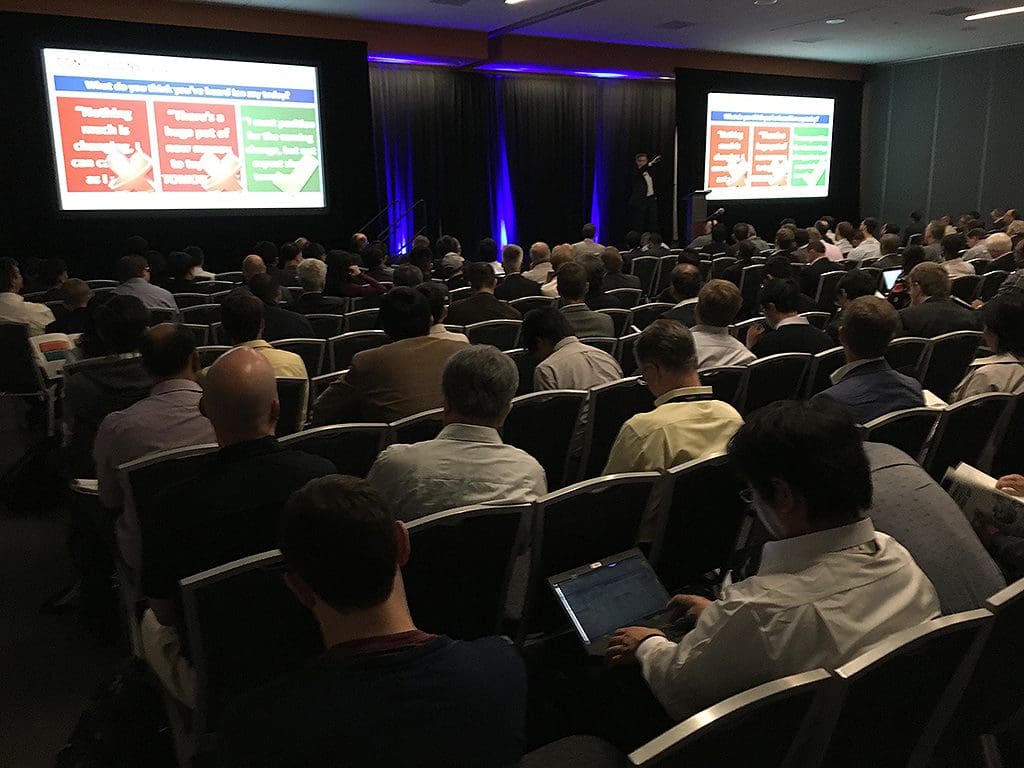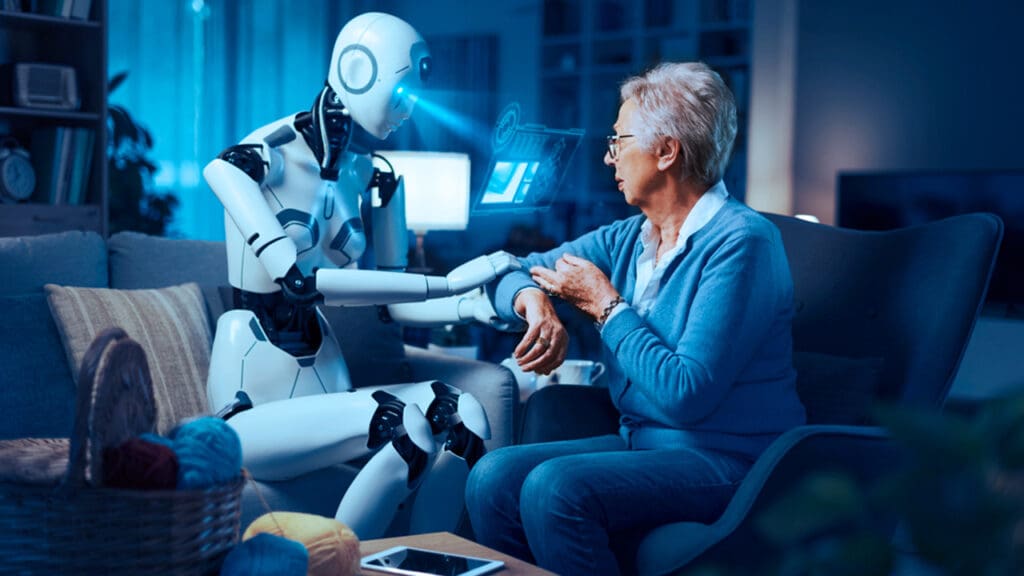A seventh-annual gathering of engineers and other professionals from across the rapidly evolving automotive industry gave participants the opportunity to gain knowledge about the changes that have already taken place in their market and to forecast, debate and share ideas on the nature and pace of changes that are ahead.
“Ten years ago, only a few awkward prototypes of autonomous cars existed …,” General Motors’ Massimo Osella said at the 2017 IEEE SA Ethernet & IP @ Automotive Technology Day on Wednesday. “Today, self-driving cars are becoming a reality right here in the streets of San Francisco.”
Mr. Osella is representing the United States Council for Automotive Research (USCAR), the conference host for events at the San Jose (California) McEnery Conference Center. Given the infancy of the concepts of connected and autonomous driving when the forum on Ethernet in automotive applications launched, Mr. Osella noted that “all of the OEMs (original equipment manufacturers) and big service providers are now competing in this space” only seven years later.
Ian Riches of Strategy Analytics spoke to his more than two decades around the automotive industry and the dramatic change of just the last two of those years, in terms of “the sheer number of new ideas coming forward—some of them crazy but some of them quite good.” In his keynote, “The Connected, Automated Vehicle: Meeting the Challenges of Car 2.0,” Mr. Riches described the in-progress transition from today’s cars which need trained drivers, are not connected and are powered by internal-combustion engines to ones which can drive themselves, are fully connected and are powered by electricity.
There are a number of hurdles along the path from here to there. For example, he said, research shows that consumers are not yet totally on board with the transition. There is significant “uncertainty about automated driving,” he said. “Trust builds very quickly … and trust breaks very quickly, as well.” Also, he said, successful business models still must be defined in several spaces of innovation, such as telematics, where the predominant approach of offering consumers a free, limited trial followed by a per-month subscription fee largely “doesn’t work.”
Nonetheless, Mr. Riches is confident enough in the transition and Ethernet’s role in it to propose 2030 “as a realistic global takeoff point for autonomous.” He said others in and around the automotive industry are confident, too, pointing out, “end-user revenue from fully automated driving is zero, (and, still) that market of zero is absolutely reshaping the value chain.”
In broad strokes, he said, “everyone (in the industry) agrees the architecture will become more central, which means a high-speed network to move data.” The trends toward a vehicle environment that is more connected and more automated are clear.
Still, “Car 2.0 will not appear overnight.” Mr. Riches urged the technology expertise in the room to take a posture of readying for the coming change but not expecting short-term profits.
“That’s a tough position to take upstairs” to business executives who control corporate budgets, Mr. Riches admitted. “But it really is the sane position to take.”
Wednesday’s activities at the 2017 IEEE SA Ethernet & IP @ Automotive Technology Day then turned to a series of technical presentations focused on network/architecture and application/connectivity:
- “High Performance Compute Architecture Supporting Revolutionary Requirements,” by Stefan Singer with NXP Semiconductors—“We won’t see a Level 5 (fully autonomous) car anytime soon, … but the impact it makes on the electronics architecture is already huge.”
- “Distributed Software-Defined Networking: Scalable vehicular ad-hoc networks,” by Ahmed Sayed Hassan with Valeo—DSDN for V2X “could provide easy scalability, high capacity and the most important thing—it would be infrastructure-less.”
- “Smart Ethernet Switch Architecture for E/E Networks,” by Manfred Kunz of Marvell Semiconductor and Michael Ziehensack with Elektrobit—The presenters defined their product as an “Ethernet switch that provides an integrated/dedicated CPU with high-speed data access for switch configuration/control and ‘data plane access.”
- “Experimental Assessment of QoS Protocols for In-Car Ethernet Networks,” by Nicolas Navet with University of Luxembourg—Among the insights from the case study he presented was “configuration and system synthesis (e.g., architecture) can and need to be much further automated in the years to come.”
- “Automotive Connectivity: Impact on the Global Network of Tomorrow,” by Steven Carlson with High Speed Design—The IEEE 802.3™ Ethernet community seeks to “open the communications channels so that we don’t get blindsided” with the bandwidth explosion coming with proliferation of connected cars. “The favor I’m asking you is to help us understand what’s going to happen—help us help you.”
- “eSync Architecture and Programming Model for OTA and Diagnostics Reaching Non-Ethernet Devices Over an Ethernet Backbone,” by Shrikant Acharya of Excelfore Corporation—eSync design considerations include reach from cloud to end device across various automotive subnetworks, bi-directional information transfer, a high degree of security and scalability “to many devices in one vehicle … to many different vehicle configurations … to millions of vehicles.”
- “Reliable Real‐time Ethernet Communication for Advanced Safety Automotive Applications,” by Hoai Hoang Bengtsson of RISE Viktoria—“There is a need for a complete tool chain that can predict, simulate and support the development of applications requiring real-time communication in heterogeneous vehicular networks, including both in-vehicle and V2V communication.”
Colt Correa of Intrepid Control Systems, Will Chu of Marvell Semiconductor and Rudi Schubert of the IEEE SA presented as sponsors of the 2017 IEEE SA Ethernet & IP @ Automotive Technology Day. The first full day of the event closed with Mr. Osella moderating a panel discussion including Nancy Cam‐Winget of Cisco, Thomas Hogenmueller of Robert Bosch, Kevin Stanton of Intel, Flavio Bonomi of Nebbiolo Technologies and Stephen Zoepf with the Center for Automotive Research at Stanford University on “Safety and Security Concerns in Vehicle Connectivity and Autonomous Driving: Can Ethernet Play a Role?”
Thursday’s presentations are scheduled to emphasize security, audio video bridging, switching, validation and testing, time-sensitive networking (TSN), higher-layer protocols and software. The presenters’ slides are to be made available at the 2017 IEEE SA Ethernet & IP @ Automotive Technology Day website.
Read Day 2 at the 2017 IEEE SA Ethernet & IP @ Automotive Technology Day
In recognition and appreciation of their Diamond Sponsorship, IEEE SA recognizes Intrepid Control Systems, Inc.
In recognition and appreciation of their Platinum Sponsorship, IEEE SA recognizes Marvell Technology Group Ltd.
In recognition and appreciation of their Silver Sponsorships, IEEE SA recognizes Broadcom Limited, Microchip Technology Inc., and OmniPHY.









